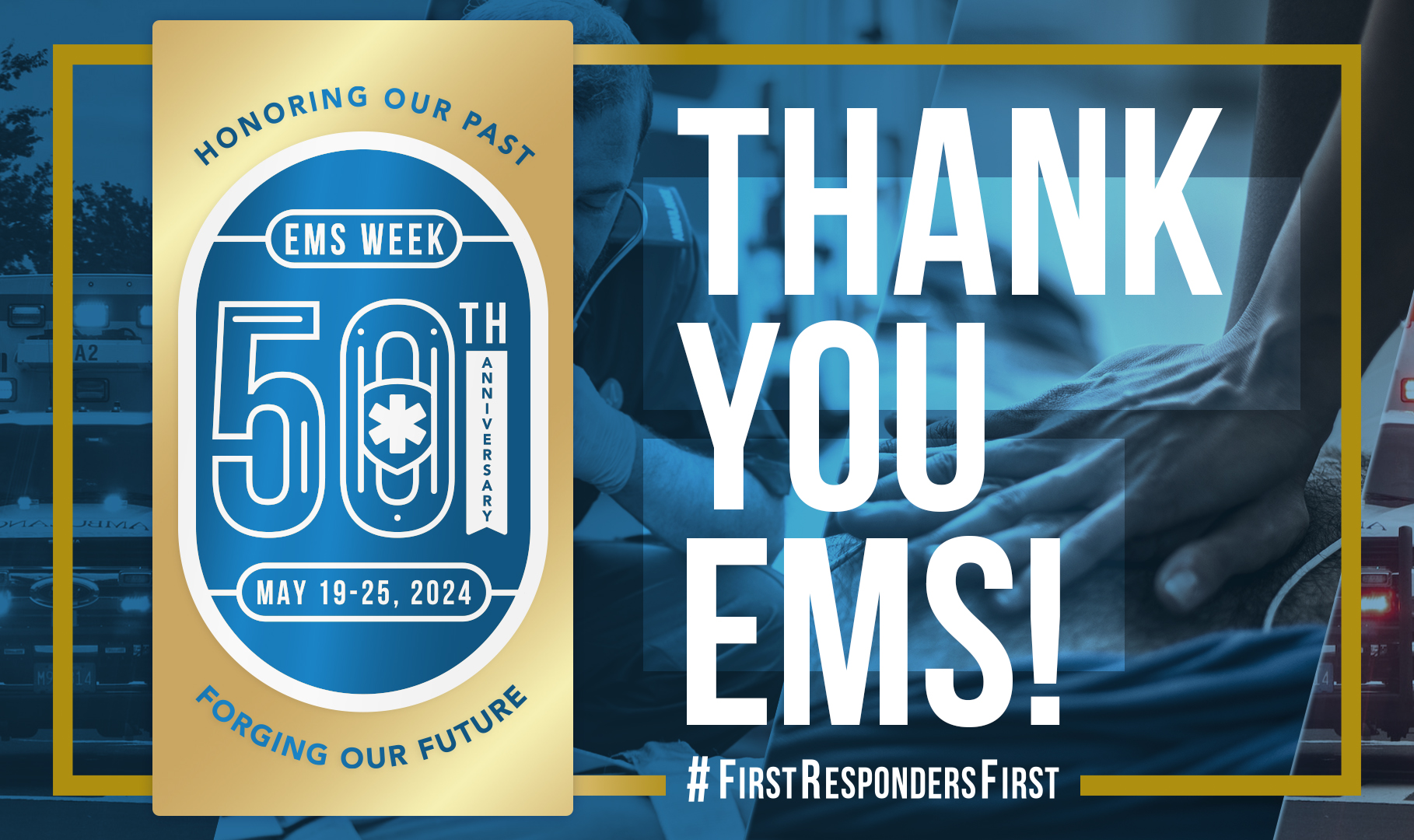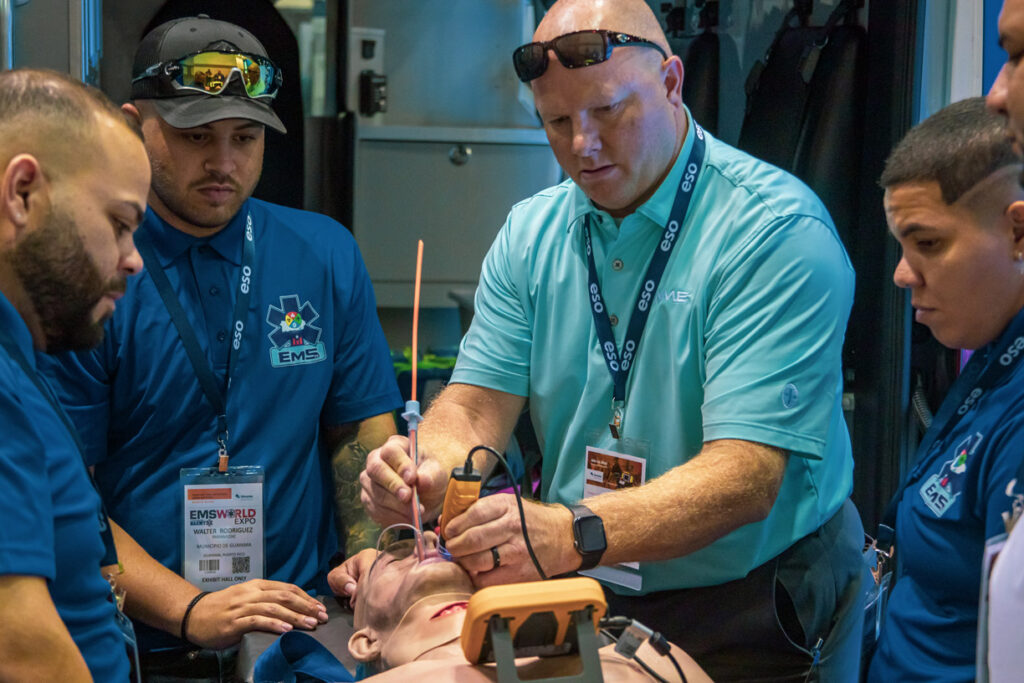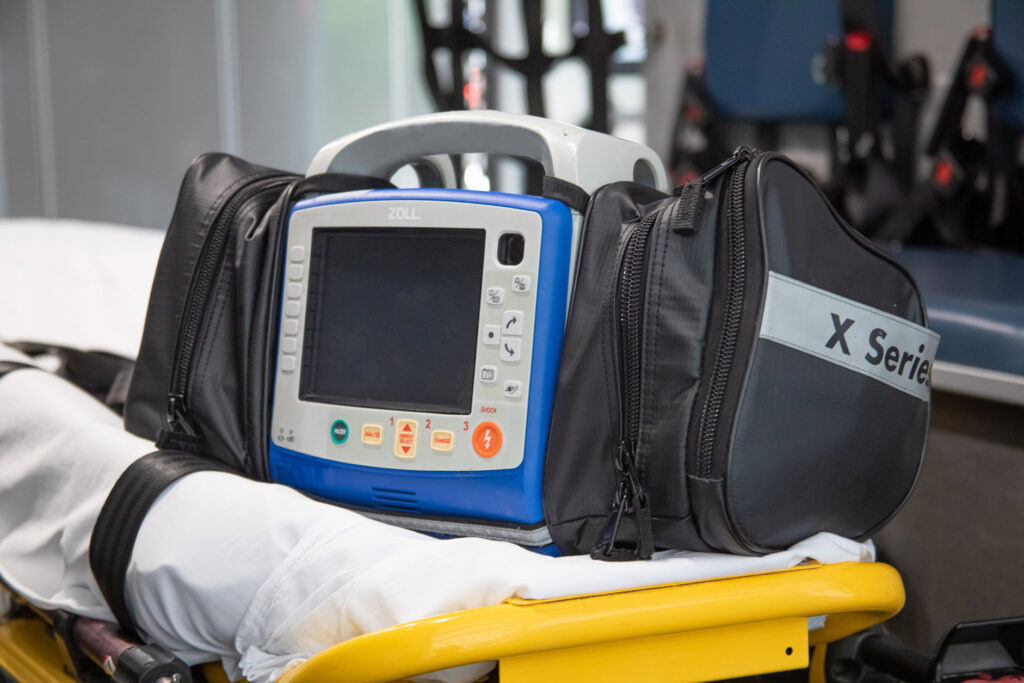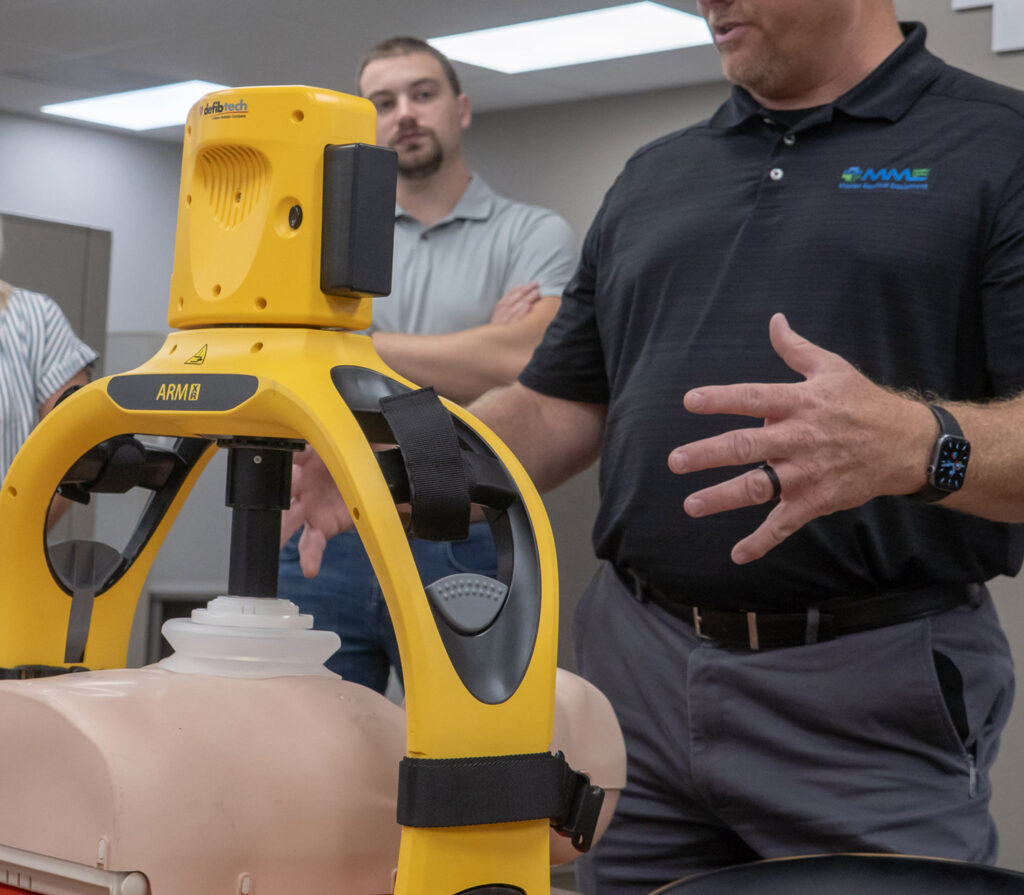Blog
50 Years of EMS Week: Honoring the Past, Present, and Future of Emergency Medicine

We’re proud to celebrate the 50th anniversary of EMS Week, a time to recognize and honor the contributions of Emergency Medical Services (EMS) to our local communities. EMTs, Paramedics, and First Responders are the backbone of our emergency response system, providing critical care and saving lives every day. At Master Medical Equipment, we celebrate this milestone by reflecting on the importance of EMS Week and the challenges facing EMS, as well as sharing some ways you can support these life-saving heroes.
 Professional Development: It provides opportunities for EMS professionals to engage in continuing education and professional development. Various events, workshops, and training sessions are organized to help EMS personnel grow their skills and knowledge.
Community Engagement: EMS Week fosters community engagement through open houses, demonstrations, and public events. These activities help build stronger relationships between EMS providers and the communities they serve.
Professional Development: It provides opportunities for EMS professionals to engage in continuing education and professional development. Various events, workshops, and training sessions are organized to help EMS personnel grow their skills and knowledge.
Community Engagement: EMS Week fosters community engagement through open houses, demonstrations, and public events. These activities help build stronger relationships between EMS providers and the communities they serve.
 Community Paramedicine: The concept of community paramedicine has emerged as an innovative model of care. Community paramedics provide non-emergency healthcare services, preventive care, and follow-up care in patients’ homes. This approach helps reduce ER visits, improve chronic disease management, and increase access to healthcare in underserved areas.
Collaboration and Integration: The integration of EMS with other emergency response systems has strengthened the overall emergency response framework. Improved collaboration between EMS, fire departments, law enforcement, and hospitals has coordinated care and resource utilization during emergencies and disasters.
Public Health Initiatives: EMS agencies have become integral partners in public health initiatives. They play a crucial role in disaster preparedness, response to public health emergencies, and community outreach programs. EMS providers have been on the front lines during public health crises, such as the COVID-19 pandemic, demonstrating their commitment and extreme importance to public safety.
Community Paramedicine: The concept of community paramedicine has emerged as an innovative model of care. Community paramedics provide non-emergency healthcare services, preventive care, and follow-up care in patients’ homes. This approach helps reduce ER visits, improve chronic disease management, and increase access to healthcare in underserved areas.
Collaboration and Integration: The integration of EMS with other emergency response systems has strengthened the overall emergency response framework. Improved collaboration between EMS, fire departments, law enforcement, and hospitals has coordinated care and resource utilization during emergencies and disasters.
Public Health Initiatives: EMS agencies have become integral partners in public health initiatives. They play a crucial role in disaster preparedness, response to public health emergencies, and community outreach programs. EMS providers have been on the front lines during public health crises, such as the COVID-19 pandemic, demonstrating their commitment and extreme importance to public safety.
 Data-Driven Decision Making: The use of data analytics and artificial intelligence will enable EMS agencies to make data-driven decisions. Predictive analytics can help identify trends, optimize resource allocation, and improve response times. Real-time data analysis will enhance situational awareness and support proactive interventions.
Mental Health Support: Addressing the mental health and wellness of EMS professionals will be a priority. Comprehensive mental health programs, peer support networks, and access to counseling services will help mitigate the impact of job-related stress and trauma, promoting the well-being of EMS providers.
Legislative Advocacy: Continued advocacy for legislative and policy changes will be essential to address funding, reimbursement, and regulatory challenges. Strengthening the EMS workforce, ensuring fair compensation, and securing sustainable funding will support the growth and stability of EMS systems.
Data-Driven Decision Making: The use of data analytics and artificial intelligence will enable EMS agencies to make data-driven decisions. Predictive analytics can help identify trends, optimize resource allocation, and improve response times. Real-time data analysis will enhance situational awareness and support proactive interventions.
Mental Health Support: Addressing the mental health and wellness of EMS professionals will be a priority. Comprehensive mental health programs, peer support networks, and access to counseling services will help mitigate the impact of job-related stress and trauma, promoting the well-being of EMS providers.
Legislative Advocacy: Continued advocacy for legislative and policy changes will be essential to address funding, reimbursement, and regulatory challenges. Strengthening the EMS workforce, ensuring fair compensation, and securing sustainable funding will support the growth and stability of EMS systems.

The Importance of EMS Week
EMS Week, first authorized by President Gerald Ford in 1974, serves several critical purposes: Recognition and Appreciation: EMS Week provides a national platform to recognize the dedication, skill, and bravery of EMS professionals. This week-long celebration honors paramedics, EMTs, dispatchers, and support staff who work tirelessly to respond to emergencies and provide life-saving emergency care. Public Awareness: EMS Week raises public awareness about the crucial role EMS plays in our healthcare system. It educates communities about the services EMS provides, encouraging community awareness and appreciation among the general public. Professional Development: It provides opportunities for EMS professionals to engage in continuing education and professional development. Various events, workshops, and training sessions are organized to help EMS personnel grow their skills and knowledge.
Community Engagement: EMS Week fosters community engagement through open houses, demonstrations, and public events. These activities help build stronger relationships between EMS providers and the communities they serve.
Professional Development: It provides opportunities for EMS professionals to engage in continuing education and professional development. Various events, workshops, and training sessions are organized to help EMS personnel grow their skills and knowledge.
Community Engagement: EMS Week fosters community engagement through open houses, demonstrations, and public events. These activities help build stronger relationships between EMS providers and the communities they serve.
Challenges Facing EMS
Despite the critical role EMS professionals play in our communities, there are significant challenges facing first responders today. Understanding these challenges is essential for encouraging, supporting and strengthening our local and national EMS infrastructure. Workforce Shortages: One of the most pressing issues is the shortage of EMS personnel. High turnover rates, coupled with increasing demand for services, have led to significant staffing challenges. Factors contributing to this shortage include job-related stress, burnout, low wages, and limited career advancement opportunities. Funding and Resources: EMS agencies often struggle with inadequate funding and resources. Many rely on limited municipal budgets or face delayed reimbursement from insurance companies and public programs. This financial instability hinders their ability to maintain and upgrade equipment, retain staff, and provide training. Mental Health and Wellness: EMS professionals regularly face traumatic and high-stress situations due to their day-to-day emergency response, which takes a toll on mental health. Anxiety, depression, and burnout are common among EMS workers. Mental health resources, while available, are still not as commonplace as they should be. Access to Technological Advancements: While advancements in medical equipment and communication systems have significantly improved EMS capabilities, staying current with these products and software can be challenging. Ensuring EMS services are properly funded for up-to-date EMS medical equipment and properly training their personnel requires substantial investment and ongoing education. Regulatory and Legislative Issues: EMS agencies navigate a complex web of regulations and legislative requirements. Changes in healthcare policies, reimbursement structures, and licensure requirements create administrative burdens on medics and support staff.Progress Over the Last Fifty Years
Despite these challenges, the EMS industry is taking tremendous strides. Innovations in training, technology, and medical protocols have revolutionized pre-hospital care and, most importantly, improved patient outcomes. Technological Innovations: The introduction of sophisticated medical equipment and technology has transformed EMS operations. Transport medical equipment is becoming more portable, more durable, and more dependable. Real-time data transmission capabilities improve the ability of EMS providers to deliver critical care in the field. Additionally, the integration of electronic patient care reporting systems has improved documentation and communication with receiving hospitals. Community Paramedicine: The concept of community paramedicine has emerged as an innovative model of care. Community paramedics provide non-emergency healthcare services, preventive care, and follow-up care in patients’ homes. This approach helps reduce ER visits, improve chronic disease management, and increase access to healthcare in underserved areas.
Collaboration and Integration: The integration of EMS with other emergency response systems has strengthened the overall emergency response framework. Improved collaboration between EMS, fire departments, law enforcement, and hospitals has coordinated care and resource utilization during emergencies and disasters.
Public Health Initiatives: EMS agencies have become integral partners in public health initiatives. They play a crucial role in disaster preparedness, response to public health emergencies, and community outreach programs. EMS providers have been on the front lines during public health crises, such as the COVID-19 pandemic, demonstrating their commitment and extreme importance to public safety.
Community Paramedicine: The concept of community paramedicine has emerged as an innovative model of care. Community paramedics provide non-emergency healthcare services, preventive care, and follow-up care in patients’ homes. This approach helps reduce ER visits, improve chronic disease management, and increase access to healthcare in underserved areas.
Collaboration and Integration: The integration of EMS with other emergency response systems has strengthened the overall emergency response framework. Improved collaboration between EMS, fire departments, law enforcement, and hospitals has coordinated care and resource utilization during emergencies and disasters.
Public Health Initiatives: EMS agencies have become integral partners in public health initiatives. They play a crucial role in disaster preparedness, response to public health emergencies, and community outreach programs. EMS providers have been on the front lines during public health crises, such as the COVID-19 pandemic, demonstrating their commitment and extreme importance to public safety.
The Future of EMS
As we celebrate the 50th anniversary of EMS Week, it’s a natural time to also look ahead at the future of EMS. Continued advancements and innovations will shape the next fifty years, further enhancing the capabilities and impact of EMS professionals. Telemedicine and Remote Monitoring: The integration of telemedicine and remote monitoring technologies into EMS operations has the potential to revolutionize patient care. EMS providers can receive real-time guidance from medical specialists, access patient health records, and monitor vital signs remotely, enabling more informed decision-making and timely interventions. Enhanced Training and Simulation: Advances in simulation technology will provide EMS personnel with realistic training experiences. High-fidelity simulators and virtual reality platforms can recreate complex medical scenarios, allowing EMS providers to practice critical skills and decision-making in a controlled environment. Mobile Integrated Healthcare: The expansion of mobile integrated healthcare programs will further bridge the gap between emergency response and primary care. EMS agencies will play a larger role in preventive care, chronic disease management, and post-discharge follow-up, improving overall community health and reducing healthcare costs. Data-Driven Decision Making: The use of data analytics and artificial intelligence will enable EMS agencies to make data-driven decisions. Predictive analytics can help identify trends, optimize resource allocation, and improve response times. Real-time data analysis will enhance situational awareness and support proactive interventions.
Mental Health Support: Addressing the mental health and wellness of EMS professionals will be a priority. Comprehensive mental health programs, peer support networks, and access to counseling services will help mitigate the impact of job-related stress and trauma, promoting the well-being of EMS providers.
Legislative Advocacy: Continued advocacy for legislative and policy changes will be essential to address funding, reimbursement, and regulatory challenges. Strengthening the EMS workforce, ensuring fair compensation, and securing sustainable funding will support the growth and stability of EMS systems.
Data-Driven Decision Making: The use of data analytics and artificial intelligence will enable EMS agencies to make data-driven decisions. Predictive analytics can help identify trends, optimize resource allocation, and improve response times. Real-time data analysis will enhance situational awareness and support proactive interventions.
Mental Health Support: Addressing the mental health and wellness of EMS professionals will be a priority. Comprehensive mental health programs, peer support networks, and access to counseling services will help mitigate the impact of job-related stress and trauma, promoting the well-being of EMS providers.
Legislative Advocacy: Continued advocacy for legislative and policy changes will be essential to address funding, reimbursement, and regulatory challenges. Strengthening the EMS workforce, ensuring fair compensation, and securing sustainable funding will support the growth and stability of EMS systems.
How can you get involved?
At Master Medical Equipment, we encourage other equipment providers, manufacturers, vendor partners, and local communities to get involved with supporting local EMS initiatives. Here are some ways you can join MME in supporting your EMS and first responder heroes: Public Awareness Campaigns: Use local media, social media, and community events to thank EMS, share stories of their life-saving work, and draw attention to the challenges facing EMS. Or, facilitate events where your community can meet and thank your local EMS providers. Fundraising Events: Organize or support events such as charity runs, auctions, galas, fundraisers, or bake sales that directly support EMS and first responders. Continuing Education: Offer continuing education opportunities and scholarships for EMS personnel to develop their skills and knowledge. Grants: Assist EMS organizations in applying for grants and securing funding from governmental and non-governmental sources. Mental Health and Wellness: Provide access to mental health resources, work-life-balance, and physical wellness services for EMS personnel. Help promote awareness of products that decrease the physical burden on EMS personnel. Legislative Support: Work with local, state, and federal governments to support and pass legislation that benefits EMS providers, such as better EMS funding, working condition updates, and improved reimbursement rates and grants.
